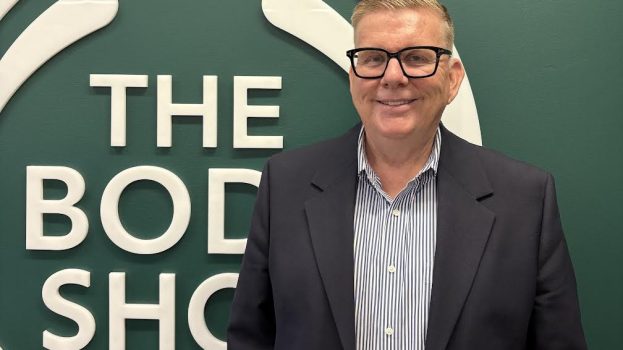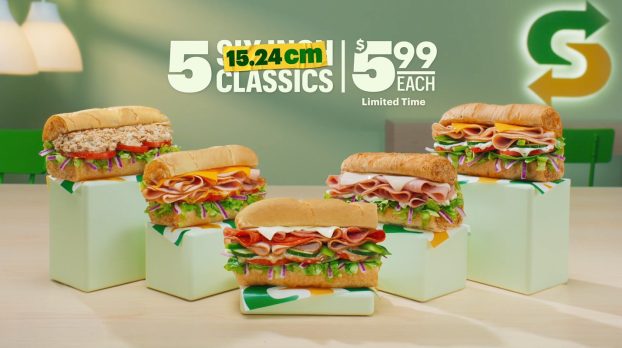
This story first appeared in the 2024 Spring issue of Strategy Magazine.
By Will Novosedlik
Two years ago, the Harvard Business Review published an article in which it considered the confusion and controversy surrounding the pursuit of corporate and brand purpose. The piece pointed out that purpose had become something of a fad and a victim of its own success, and that if you were going to pursue it, you had better understand why you’re doing it and how it works. Like the obsession with vision and mission statements from the early ‘90s, the authors (a collection of CMOs, CHROs, academics and consultants) worried that adopting a corporate purpose to appease shareholders and society runs the risk of putting “speed, shortcuts, and spin… over authentic action.” Despite that worry, which has not been unjustified, the push to define organizations’ purpose caught fire over the years.
Why purpose? Where did it even come from? Rob Galletta, CEO of brand and business consultancy Blackjet, traces it back to a TED Talks originally given by leadership guru Simon Sinek in 2009 entitled, “Start with why: How great leaders inspire action.” Says Galletta, “Sinek’s argument was that it’s not enough to have a product or a service and a rationale for buying it. There needs to be a deeper purpose, and everyone in the organization needs to be inspired to act on it.” For Sinek, the answer to “why purpose” was not to make a profit: he was referring to why your organization exists, why you get up in the morning, and why anyone should care. It was never about money. It was about inspiration.
While it’s tempting to trace the origin of brand purpose to a single event, it may not be as simple or as tidy as that.
In the 1970s, the godfather of neoliberal economics, Milton Friedman, argued that a company has no social responsibility to the public or society; its only responsibility is to its shareholders. Anyone who has lived through the last 25 years has seen the results of this line of thinking: massive economic inequality, environmental degradation, deregulation, erosion of the social safety net, and the concentration of wealth within the smallest possible number of hands. The unfairness of these conditions reached its apogee in the Great Recession of 2008, just before Sinek gave his TED Talks.
None of this has been lost on the victims, especially the younger cohorts who can see the world that lies ahead is a much tougher, more unforgiving and possibly lethal place than the one they grew up in. In this context, the emergence of purpose as a corporate necessity makes complete sense. If governments can’t, or won’t, protect you or the planet, who will? And if you are a corporation, what are you going to do to attract and retain customers and employees? How will you keep your license to operate in the communities where your business is done?
As marketing and organizational culture expert Hilton Barbour puts it, “I don’t think anyone should be surprised that, as the world became more reflective about the impacts of capitalism, what we’re doing to the planet, and, frankly, to each other, the notion of purpose would rise to the surface.”
The textbook case for corporate purpose is Unilever, and the poster child for enlightened business leadership was the late Paul Polman, who took over as the CPG’s global CEO in 2009. One of his first initiatives was the Unilever Sustainable Living Plan (USLP), which is based on the belief that “in a volatile world of finite resources, running a business sustainably is vital for its long-term growth and also mitigates risk and reduces costs.” It was built on three pillars: improving the livelihood of a billion people through better hygiene, health and nutrition; cutting Unilever’s environmental impact in half; and improving fairness to workers in the workplace, especially women.
The USLP designated 28 brands from the Unilever portfolio as “Sustainable Living Brands,” selected to help achieve Polman’s growth ambitions. The results were impressive. Under Polman’s leadership, Unilever provided eight years of topline growth and a return more than double that of the FTSE index. In 2020, Gary Wade, then-president of Unilever Canada, told strategy that its 28 Sustainable Living Brands were furthest ahead, growing 69% faster than the rest of the portfolio.

Rob Galletta, CEO, Blackjet
In a 2018 Ernst & Young paper entitled Winning with Purpose, the company’s research revealed that 89% of customers believe that purpose-driven companies deliver higher quality products and services. In an Edelman study, 72% of respondents said they would recommend a company with a purpose. The Havas Meaningful Brands Index claimed that between 1996 and 2011, purpose-led companies performed 10 times better than the S&P 500 in terms of revenue growth.
Despite all that, by 2022, sentiment among investors had begun to shift. Terry Smith, founder of the Fundsmith Equity Fund (Unilever’s 9th largest investor), blamed Unilever’s focus on sustainability and brand purpose for the FMCG giant’s underwhelming performance in 2021. Said Smith at the time, “A company which feels it has to define the purpose of Hellmann’s mayonnaise has in our view clearly lost the plot.” That same year, Unilever-owned Ben & Jerry’s sparked market controversy after refusing to sell ice-cream in areas of the West Bank, which, at the time, the company stated as being “occupied Palestinian territory.” As a result of Ben & Jerry’s decision, Unilever shares dropped 9.4% on the year.
Consequently, in October 2023, Unilever’s newest CEO, Hein Schumacher, announced that the company had been guilty of “force-fitting” purpose into its brands, and set out a new strategy to deliver “faster growth” after admitting the FMCG had underperformed. Schumacher added, however, that purpose was an indispensable talent magnet, and for that reason the company would never abandon it. He also said that for certain brands, like Dove and Lifebuoy, brand purpose could be highly effective if done well and with credibility. In March of this year, Unilever, announced that it is cutting 7,500 jobs and spinning off its ice cream business to increase profits and curb costs. Some experts suggest that the brand could see added benefits from parting ways with Ben & Jerry’s, whose commitment to social activism has at times created friction with its parent company.
So is purpose good or bad for business? The debate continues. Part of the problem is how to define “purpose.” People often confuse it with CSR, ESG and DEI. Says Galletta, “A lot of senior marketers that I’ve been dealing with are now tasked with being the ESG/DEI people within their organizations. The rest of the C-suite sees it as a marketing problem, not an organizational challenge. So there’s this disconnect at the executive level. When marketing isn’t part of the conversation about business fundamentals, marketers often fall back on purpose as a marketing strategy. And it’s disingenuous.”
As the aforementioned HBR article pointed out, the word “purpose” tends to be used in three senses: cause-based purpose (such as Patagonia’s “We’re in business to save our home planet”); competence-based purpose (such as Mercedes’ “First move the world”), which expresses a clear value proposition to customers and the employees responsible for delivering it; and culture-based purpose (such as Zappos’ “To live and deliver WOW”), which are effective at creating internal alignment and collaboration with partners. Any of the three can create a meaningful “why.”

Ron Tite, founder and CCO, Church+State
To illustrate how confusing things can get, Des Jones, CSO of Juniper Park\TBWA, points to the cause-related flop of Bud Light’s collaboration with trans influencer Dylan Mulvaney. The U.S. brand’s decision to feature the TikTok star in a marketing campaign subsequently lit an internet firestorm among both conservatives and progressives. “While diversity and inclusion are a noble cause, Bud Light lost sight of its purpose, which is to be the beer for everyone,” says Jones. “Unfortunately a sizable proportion of Bud Light drinkers read the Mulvaney stunt as meaning ‘the beer for transgender people’.” Bud Light’s attempt at recovery was haphazard and made things worse, resulting in major losses in both sales and market share, with the blast radius burning other brands in the portfolio.
Sometimes, even when the activation is aligned with the purpose, the brand can attract the wrong kind of attention. For example, Doc Martens, which has long-supported the LGBTQIA+ community, recently found itself accused of being “woke” by right wing social users. The brand’s purpose is deeply interwoven with the community, and 30% of the company’s employees identify as LGBTQIA+, according to a Forbes article. Yet when the brand ran a contest offering a chance to win a custom pair of boots designed by artist and LGBTQIA+ supporter Jess Vosseteig, the attacks flooded in from right wing consumers as if the contest were aimed at them.
What about culture-based purpose? Almost everyone strategy spoke to for this article agreed that a purpose’s greatest value is its ability to galvanize internal culture. Says Barbour, “To me, the most sustainable competitive advantage of any organization is its culture. Culture is either an accelerant or impediment to their strategic goals. Certainly the messages we send out to the world are a key part of marketing, but the ability to deliver against the promises made by marketing is culture. If it doesn’t start with culture, then however the brand manifests itself externally will always feel like lipstick on a pig.”
Andrew Oosterhuis, VP marketing at Labatt Breweries Canada, couldn’t agree more. He cites owner AB Inbev’s purpose as “dream big and create a future with more cheers.” Says Oosterhuis, “It’s my job to operationalize that. So I have created an annual culture day where we ask, ‘What does this mean for us as a team?’ Every quarter I invite all my external partners to join us for a beer to talk about business results and highlight examples of how we’re trying to dream big. And every Monday morning at 8:30 I send an email to my team entitled ‘Dreaming Big,’ in which we recognize individual performance and I remind my people that if not us, who? There’s no one else who’s going to dream big for us.”
As for competence-based purpose, Kellanova is in business to “create better days and a seat at the table for everyone,” says VP of global cereal, Emma Eriksson. “Better days is about the food that nourishes you. A seat at the table is about inclusivity and equality.” It makes sense then, that, being in the cereal business, Kellanova demonstrates purpose through its support for school breakfast programs across Canada and Europe that “provide nutrition to underprivileged children at the start of their day.”
Katherine Bond-Debicki, CMO of KFC Canada, also points to her brand’s focus around food insecurity. “As part of the world’s largest restaurant company, I look at where we’re going and I feel we’re really clear on how our purpose needs to connect to what we do best, which is to be grounded in food and access to food,” she says. “So for the past eight years we have had in place a foundational program here called Harvest (soon to be renamed ‘KFC Donations’), where we donate our surplus protein and vegetable ingredients to local food banks across Canada. More than half of our restaurants are part of this, and it’s something we intend to grow.”
Brands like Kellanova and KFC understand the importance of aligning ESG efforts with their brand purpose. Ron Tite, founder and chief creative officer at Church+State, agrees that purpose needs to align with the business you’re in, but “the purpose of purpose is growth – it needs to be strategically aligned with how you make money… In an attempt to win hearts and minds, brands have seen the need to elevate the conversation into something that is more important than just profit.
The problem is that they’re coming up with things like ‘our purpose is to save the world, which is why we make crackers.’ No. The purpose of purpose is to define what your organization fundamentally believes in, use that purpose to guide and to focus activity, and infuse it into your marketing communications.”
He gives the example of GM, which undertook a rebrand in 2021. “They saw that their business was completely changing, so the first thing they did was create a new purpose statement: ‘We stand together to drive the world forward.’ Then they asked themselves, how do we back that up? So they added 14 EV products to their portfolio. They redesigned the customer experience. To communicate purpose in a way that’s relevant, entertaining and engaging, they didn’t [repeat their mission statement] ‘We stand together to drive the world forward.’ [Instead], their line was ‘Everybody in,’ which speaks to diversity and inclusion when it comes to people, and to a diversified portfolio when it comes to product.”
However, with the proliferation of purpose marketing over the years, some researchers point to the arrival of a new era in which “purpose fatigue” is causing cause initiatives to fall short of consumer expectations. A Febuary 2024 report from Proof Strategies CanTrust Index found that “Canadians have a limited desire for business leaders to speak out about… climate change, racism, and social equity.” In fact, there’s been a drop in the number of Canadians who believe business leaders should speak out on these issues – 49% in 2023 vs. 57% in 2022.
As strategist and brand coach Mary Jane Braide observes, “I think marketers [have been] responding to a couple of things. One is that everybody else is marketing purpose, so it’s not a differentiator anymore. It’s now table stakes.” Galletta agrees: “My beef with purpose is that everyone’s picking the exact same areas: environment, diversity, sustainability. It just all sounds the same.”

Mary Jane Braide, strategist and brand coach
“Prior to 2020,” continues Braide, “60 to 70% of consumers said they actually prefer to transact with companies or brands for whom purpose is central. Well, that number’s gone down. Part of it was the pandemic: people were less concerned about your brand’s purpose and more focused on their family’s survival. But post-pandemic, inflation and financial pressures made people more oriented to transactional value propositions. A lot of marketers were relying on those pre-pandemic numbers in their campaign pitches to say, ‘Let’s go to market with purpose, because consumers buy on it. But that’s not necessarily true anymore. Worse, many marketers have shoehorned purpose into campaigns as opposed to purpose being derived from the [business] strategy.” And that’s how purpose fatigue sets in.
In a sense, the term “purpose marketing” contains the seeds of its own demise. It goes back to the HBR article, which asserts that “conflating marketing and purpose can lead to the sort of posturing whereby British American Tobacco and Philip Morris International claim that their purposes are, respectively, ‘to build a better tomorrow’ and to ‘unsmoke the world and create a better tomorrow’.” (Both are developing smoke-free products that are less harmful, but not entirely free from harm.)
In other words, if you’re using purpose as a sales tool, then you are prioritizing the sale over the purpose. Your “higher” purpose is already compromised. And people can see right through that.






















